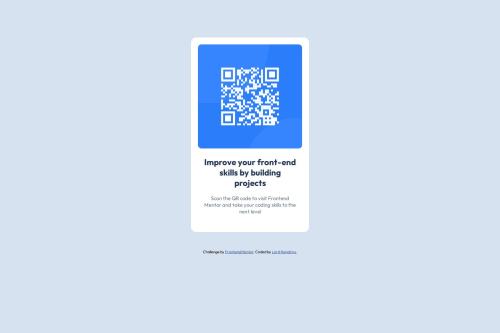Responsive landing page using CSS flexbox

Solution retrospective
I love how i paid attention to structuring my html document to allow ease in implementing CSS Flex-box.
What challenges did you encounter, and how did you overcome them?Initially, CSS Flexbox was a hassle to implement but i overcame it by applying core fundamental CSS principles as well as good html structure for easy flow.
What specific areas of your project would you like help with?I would like help with
- Feedback on how close i am to the design.
- how concise and readable my code is.
- how structured my html is also. And lastly, alternatives to solve the challenge.
Please log in to post a comment
Log in with GitHubCommunity feedback
- P@huyphan2210
Hi, @BeeAlmighty
I checked out your solution and I have some thoughts:
- Frontend Mentor will assess your solution once submitted. It's best to review your work and address any potential issues before submitting.
- Your
bodydoesn't fill the entire viewport. The viewport refers to the visible area of the browser window. To ensure it fills the whole screen, you should applymin-height: 100vhto thebody. This is generally considered a best practice for most pages, though there are exceptions. Also, setmargin: 0on thebody, make it non-scrollable on desktops, as the browser adds default margins. - Since you're using Flexbox on the
body, you can easily center the.container(the card) by applyingmargin: auto. This will center the card within the available space, and Flexbox will handle the rest for you. - For better accessibility and readability, try to use more semantic HTML elements instead of relying on
divs. Elements likemain,footer, andarticleprovide meaning to the structure of the page and are better for SEO and screen readers. - You're using
h2for the card title, but there's noh1on the page. It's better to useh1for the main heading, as it provides a clear hierarchy for both users and search engines. You can still style it to match the design using CSS. - Make your CSS class names more meaningful and descriptive. Research CSS naming conventions like BEM (Block Element Modifier), which can make your code easier to understand and maintain.
- Lastly, I'd recommend familiarizing yourself with the mobile-first approach. It’s a popular and effective method for building responsive designs, where you start styling for mobile screens and progressively enhance the design for larger screens.
Hope this helps!
Marked as helpful - @MenesesMG
Yes
Join our Discord community
Join thousands of Frontend Mentor community members taking the challenges, sharing resources, helping each other, and chatting about all things front-end!
Join our Discord